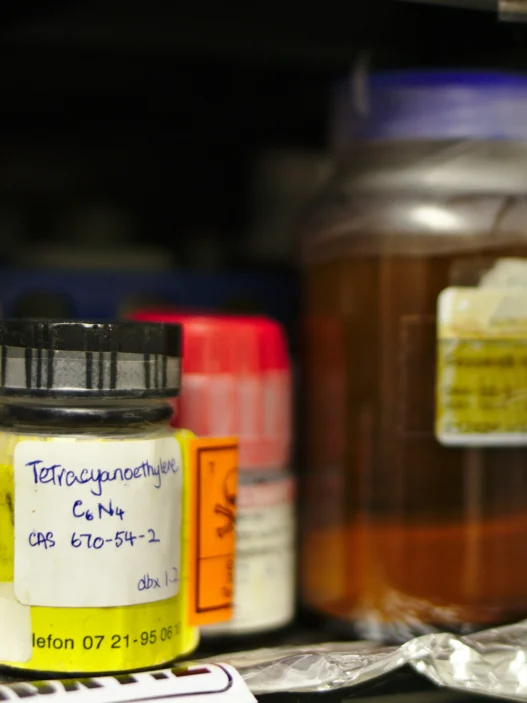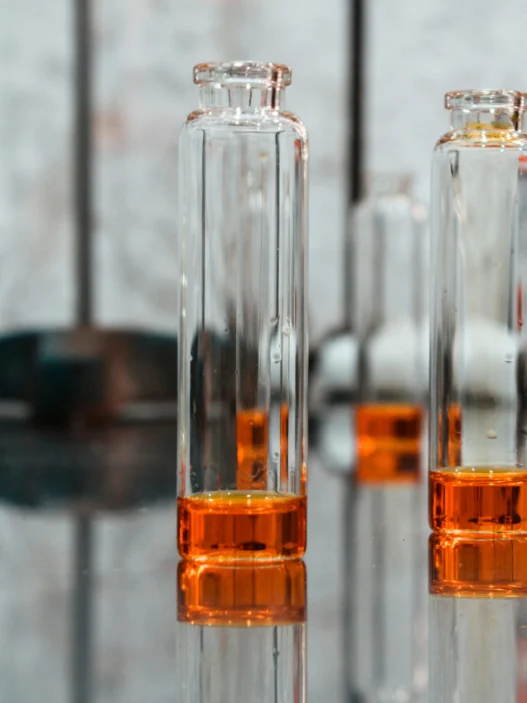2-(Dibutylamino)ethanol, a compound commonly utilized as a surfactant and corrosion inhibitor in various industrial applications, plays a crucial role in everyday life. Its presence is particularly notable in household products such as cleaning agents and paints, where it helps in achieving effective cleaning and protection against corrosion. Additionally, this compound is also used in the production of personal care items like shampoos and lotions to enhance their performance. Thus, 2-(Dibutylamino)ethanol contributes significantly to the quality and functionality of numerous products that individuals interact with on a daily basis.
Table of Contents:
- 💡 Commercial Applications
- ⚗️ Chemical & Physical Properties
- 🏭 Production & Procurement
- ⚠️ Safety Considerations
- 🔬 Potential Research Directions
- 🧪 Related Compounds
💡 Commercial Applications
2-(Dibutylamino)ethanol, more commonly known as DBAE, has several commercial and industrial applications. As a surfactant, it is often used in various cleaning products and detergents due to its ability to lower surface tension and enhance the solubility of other compounds. Additionally, DBAE is used in the manufacturing of pesticides and herbicides for its role as a solvent and emulsifier.
In the realm of drug and medication applications, DBAE is utilized as an excipient in topical formulations such as creams and gels. Its ability to enhance the penetration of active ingredients through the skin makes it a valuable component in transdermal drug delivery systems. Furthermore, DBAE has been studied for its potential use in controlled drug release formulations for oral medications, offering a way to regulate the rate at which drugs are released in the body.
⚗️ Chemical & Physical Properties
2-(Dibutylamino)ethanol is a colorless liquid with a slight ammonia-like odor.
The compound has a molar mass of approximately 189.31 g/mol and a density of about 0.883 g/cm3. In comparison, common food items such as sugar and salt have much lower molar masses and densities.
The melting point of 2-(Dibutylamino)ethanol is around -20°C, while the boiling point is approximately 223°C. These values are significantly higher than those of many common food items like water and butter.
2-(Dibutylamino)ethanol is soluble in water and has a relatively low viscosity. This differs from common food items like oil and honey, which may have different solubility in water and higher viscosity levels.
🏭 Production & Procurement
2-(Dibutylamino)ethanol, also known as DEA, is primarily produced through the reaction of 2-chloroethanol and dibutylamine. This reaction is typically carried out in the presence of a base such as sodium hydroxide. The resulting DEA product is then purified and isolated through methods such as distillation or extraction.
2-(Dibutylamino)ethanol can be procured from chemical suppliers or manufacturers who produce the compound in bulk quantities. It is commonly transported in liquid form in drums or tanks to ensure safe handling and storage. Proper labeling and documentation are required for the transportation of DEA to comply with regulations and ensure safety.
The procurement of 2-(Dibutylamino)ethanol may also involve importing the compound from international suppliers. Transportation methods such as shipping or air freight are utilized to transport DEA from overseas locations to the final destination. Quality control measures are implemented to verify the purity and integrity of the product during the procurement process.
⚠️ Safety Considerations
Safety considerations for 2-(Dibutylamino)ethanol involve recognizing the substance as a flammable liquid with potential health hazards if inhaled, ingested, or in contact with skin. It is important to handle this chemical in a well-ventilated area and wear appropriate personal protective equipment, such as gloves and goggles, to prevent any accidental exposure. Furthermore, storage of 2-(Dibutylamino)ethanol should be in a cool, dry place away from incompatible materials to avoid any potential risks.
The hazard statements for 2-(Dibutylamino)ethanol include “Causes serious eye irritation,” “Causes skin irritation,” and “Toxic to aquatic life with long-lasting effects.” These statements highlight the potential risks associated with this chemical, requiring careful handling and disposal practices to minimize any harmful impacts on human health and the environment. It is crucial to follow safety guidelines when working with 2-(Dibutylamino)ethanol to prevent any accidents or incidents that could result in harm.
Precautionary statements for 2-(Dibutylamino)ethanol include “Avoid breathing dust/fume/gas/mist/vapors/spray,” “Wash skin thoroughly after handling,” and “Dispose of contents/container in accordance with local/regional/national/international regulations.” These statements emphasize the importance of taking necessary precautions to protect oneself and the environment when using this chemical. Following these guidelines will help ensure safe handling and proper management of 2-(Dibutylamino)ethanol to minimize any potential risks.
🔬 Potential Research Directions
One potential research direction for 2-(dibutylamino)ethanol is its role as a potential corrosion inhibitor in various industries. Studies could focus on its effectiveness in preventing corrosion in metals exposed to harsh environments, leading to the development of more efficient and environmentally friendly corrosion protection strategies.
Another potential area of research could be the use of 2-(dibutylamino)ethanol as a surfactant in various applications such as in the pharmaceutical and cosmetic industries. Investigations into its surfactant properties could lead to the development of novel formulations for drug delivery systems or personal care products. Additionally, studies on its biodegradability and toxicity profile could provide valuable information for ensuring its safe use in various applications.
🧪 Related Compounds
One similar compound to 2-(Dibutylamino)ethanol based upon molecular structure is 2-(Dipropylamino)ethanol. This compound differs from 2-(Dibutylamino)ethanol in the length of the alkyl chains attached to the amino group. In 2-(Dipropylamino)ethanol, the amino group is attached to two propyl groups instead of two butyl groups.
Another similar compound is 2-(Diethylamino)ethanol. In this compound, the amino group is attached to two ethyl groups, making it structurally similar to 2-(Dibutylamino)ethanol. The difference lies in the length of the alkyl chains attached to the amino group.
A third similar compound is 2-(N,N-Diethylamino)ethanol. This compound has the amino group attached to two ethyl groups, similar to 2-(Diethylamino)ethanol. However, the presence of the N,N-diethylamine moiety gives it distinct chemical properties compared to the other compounds.




